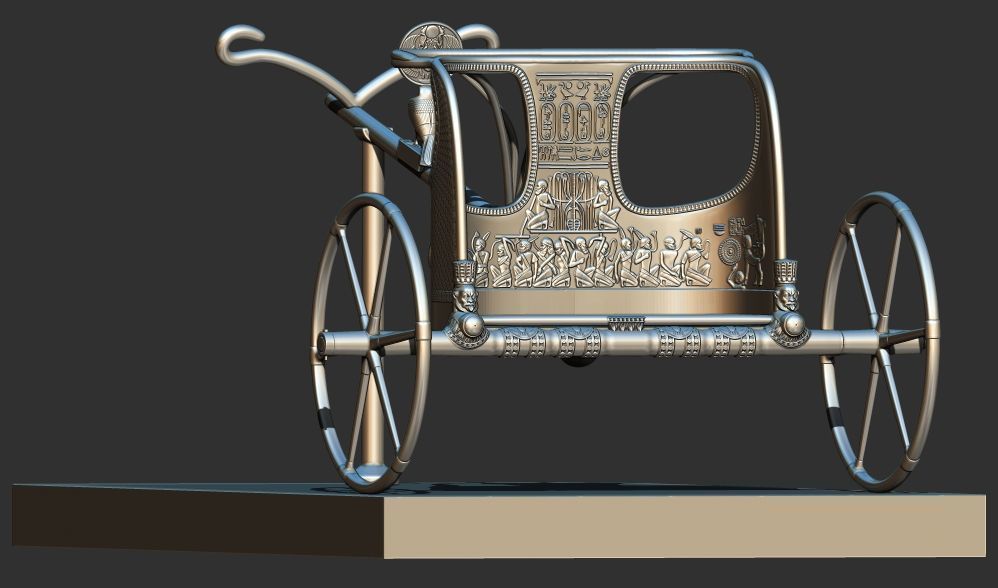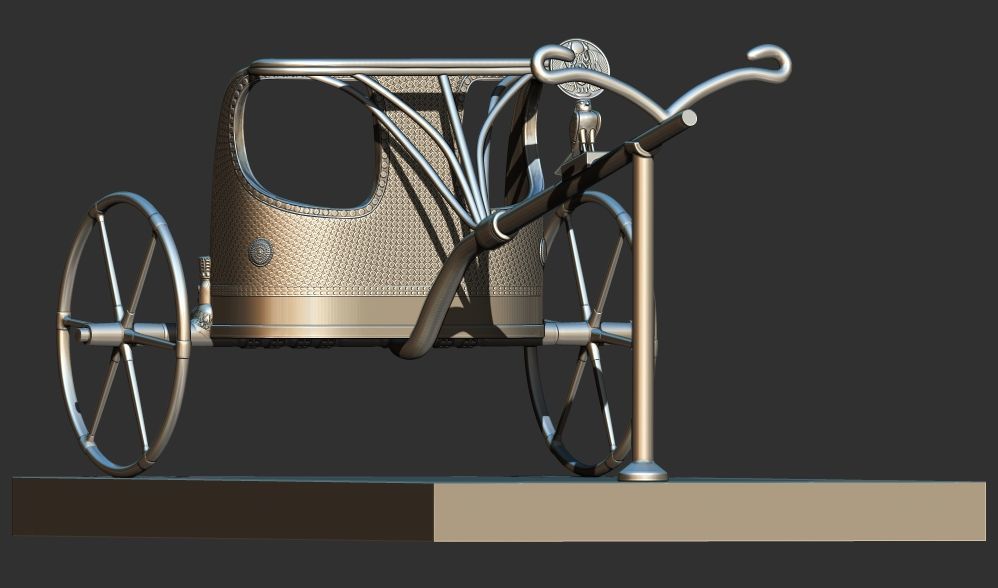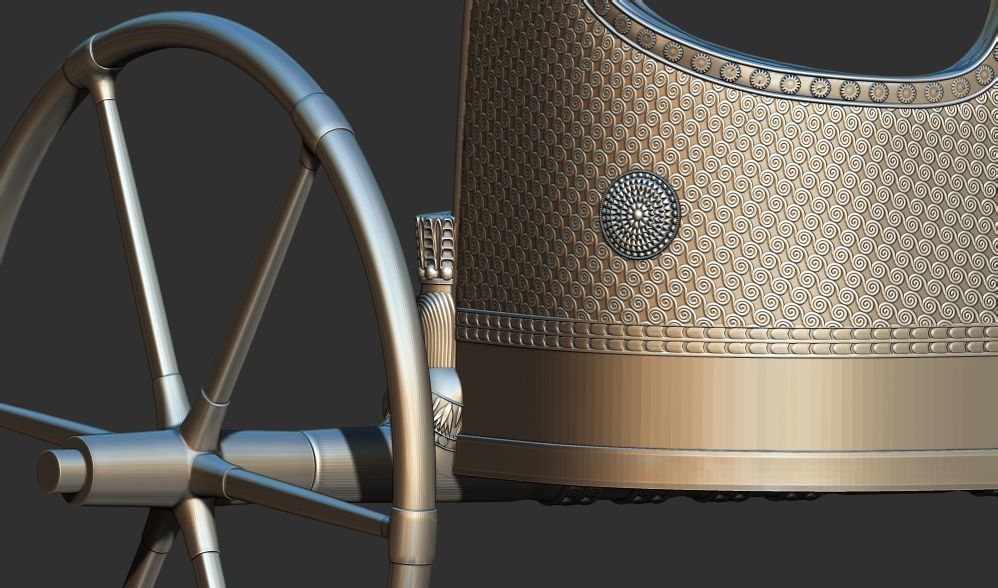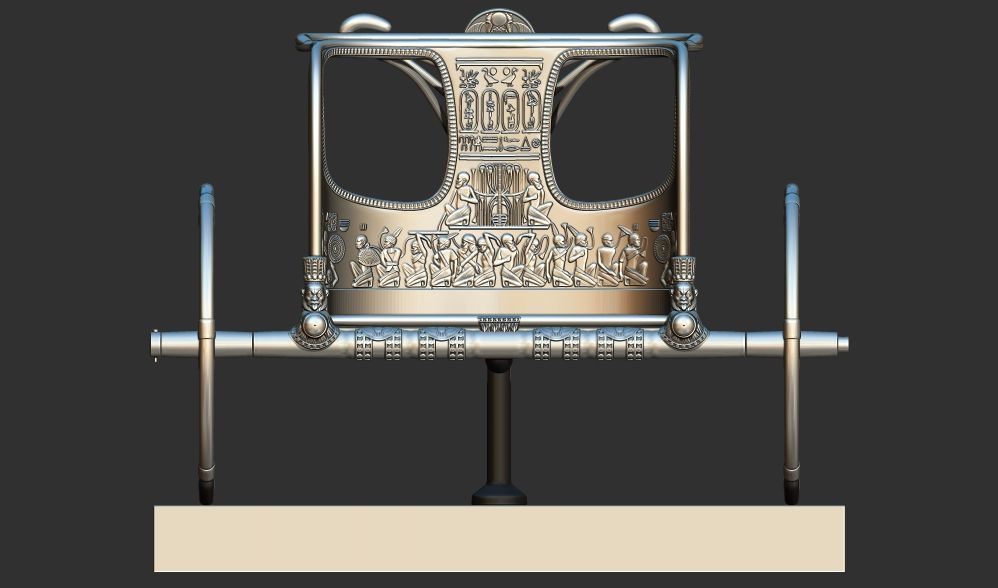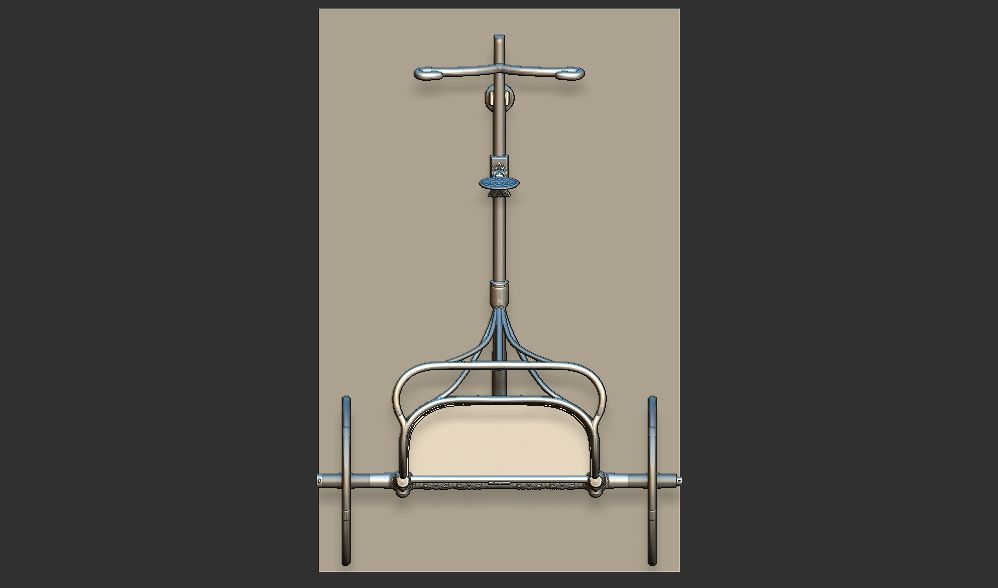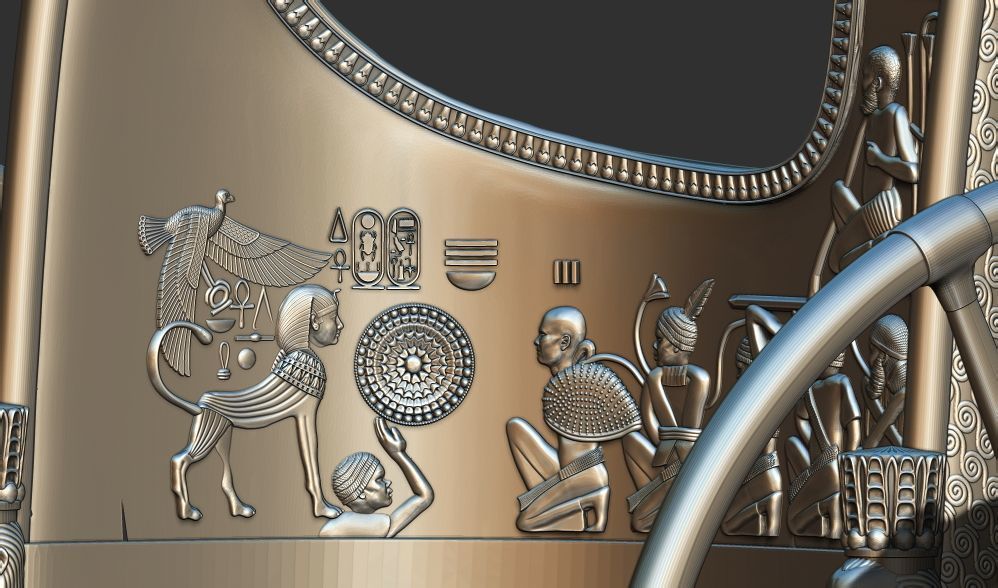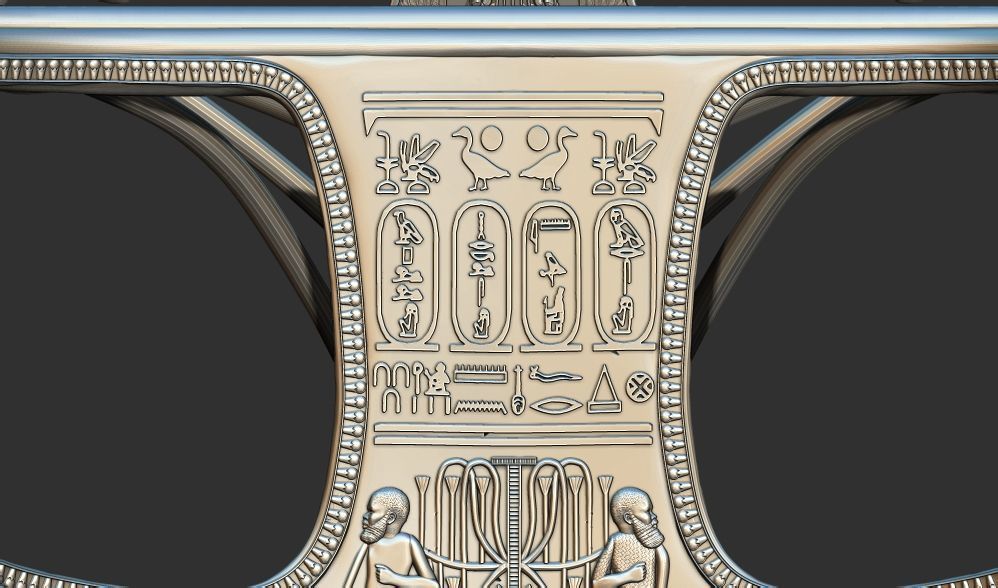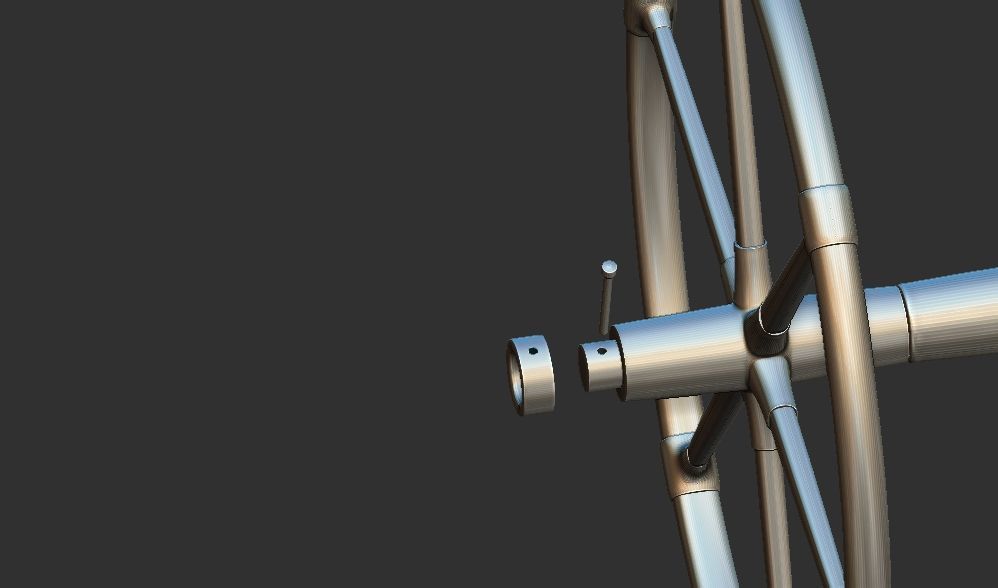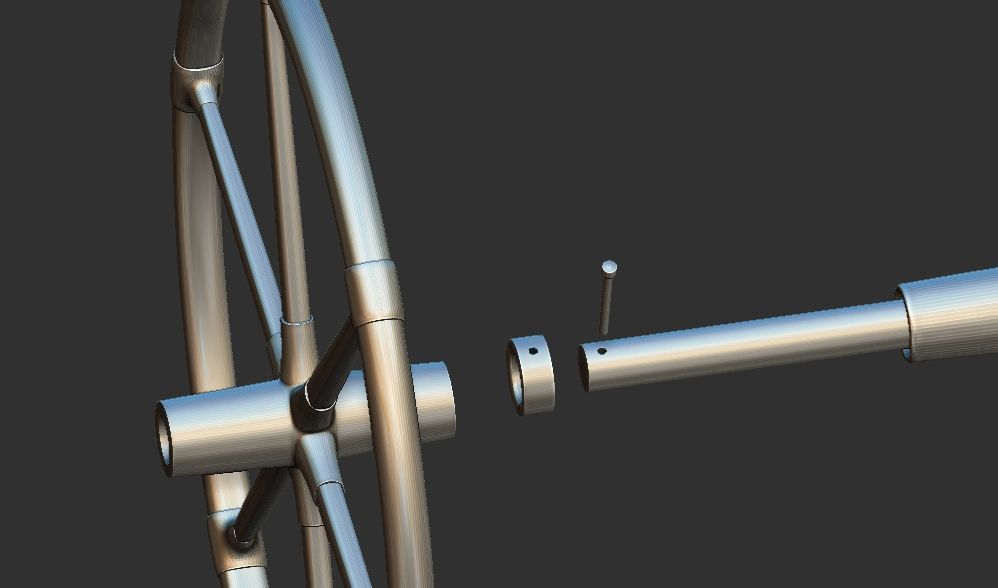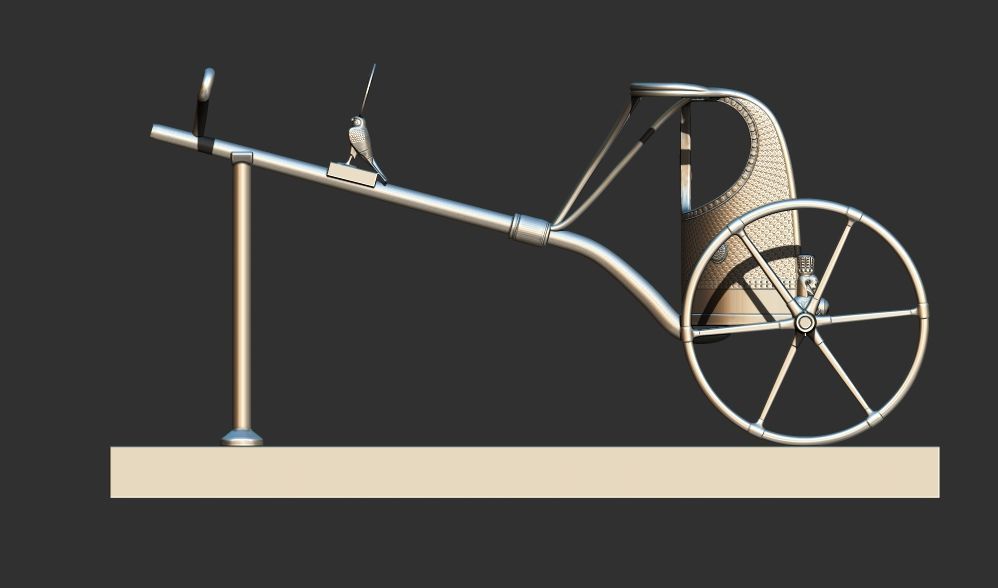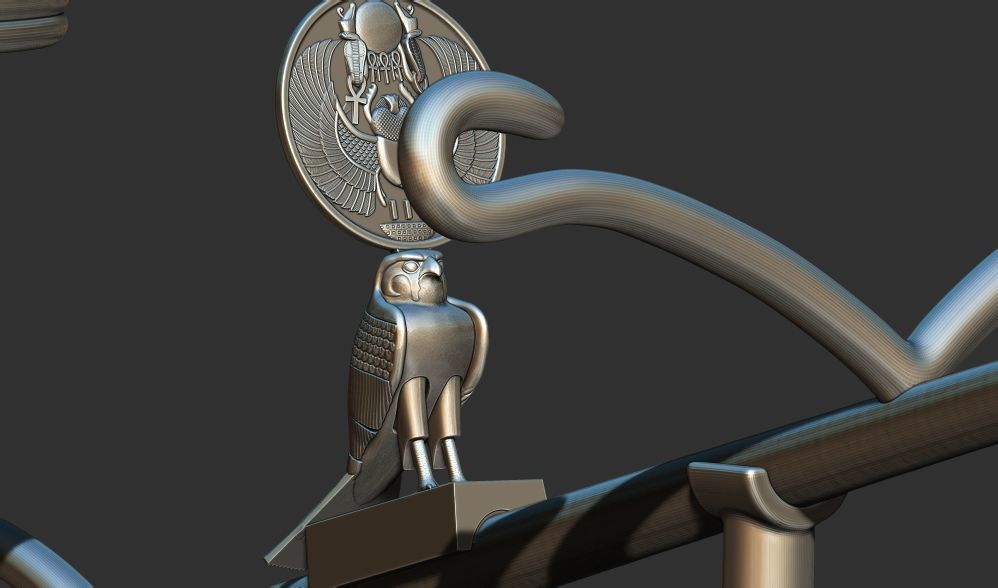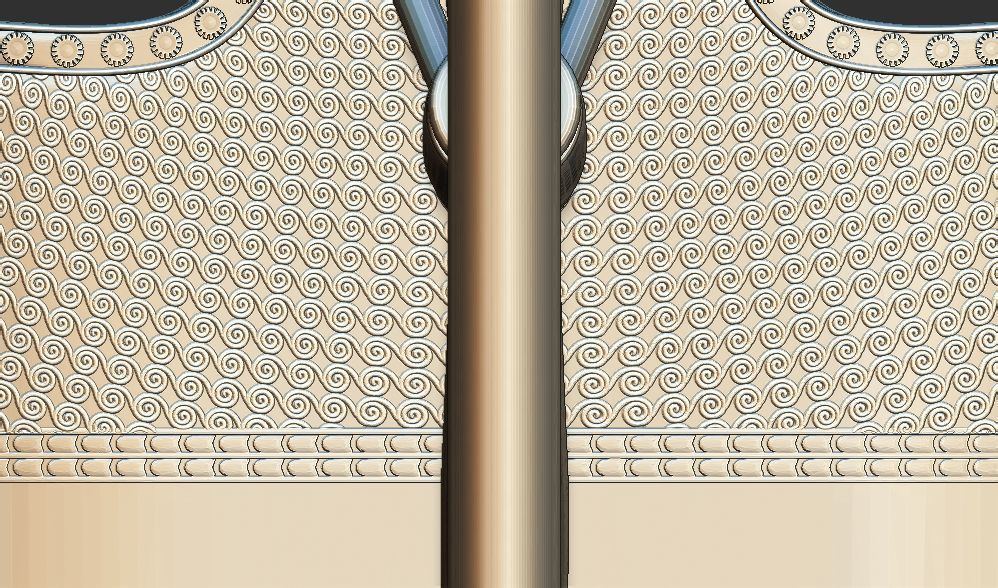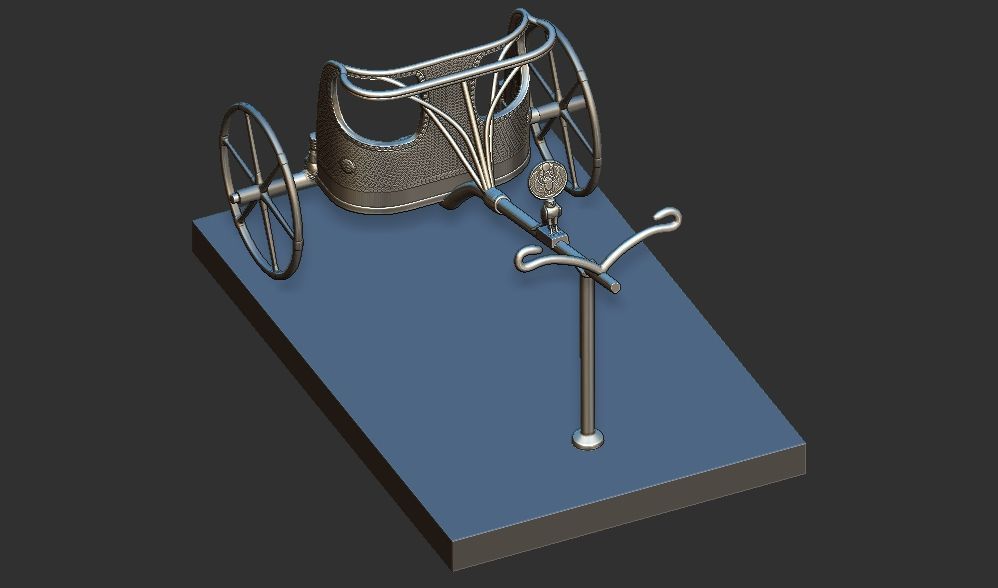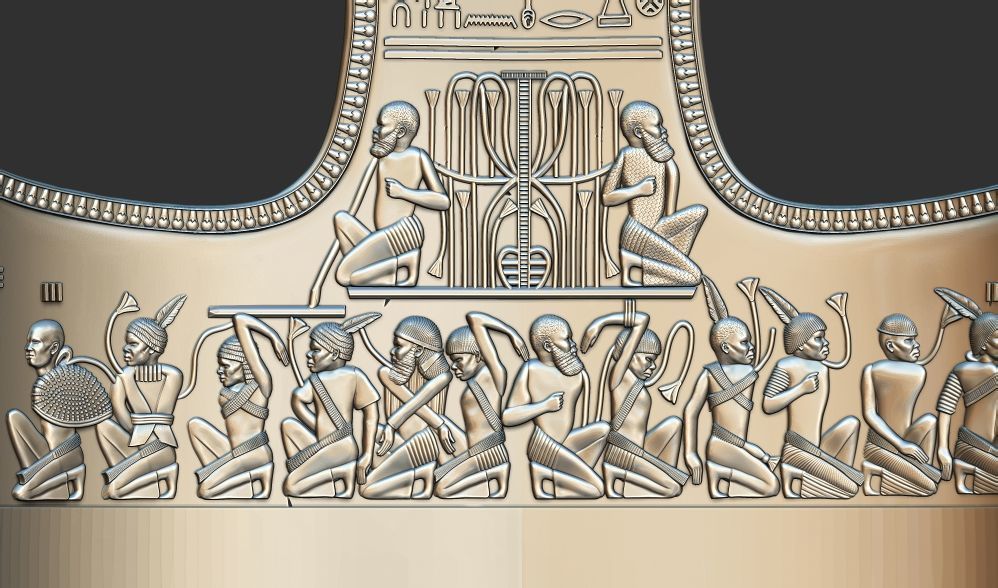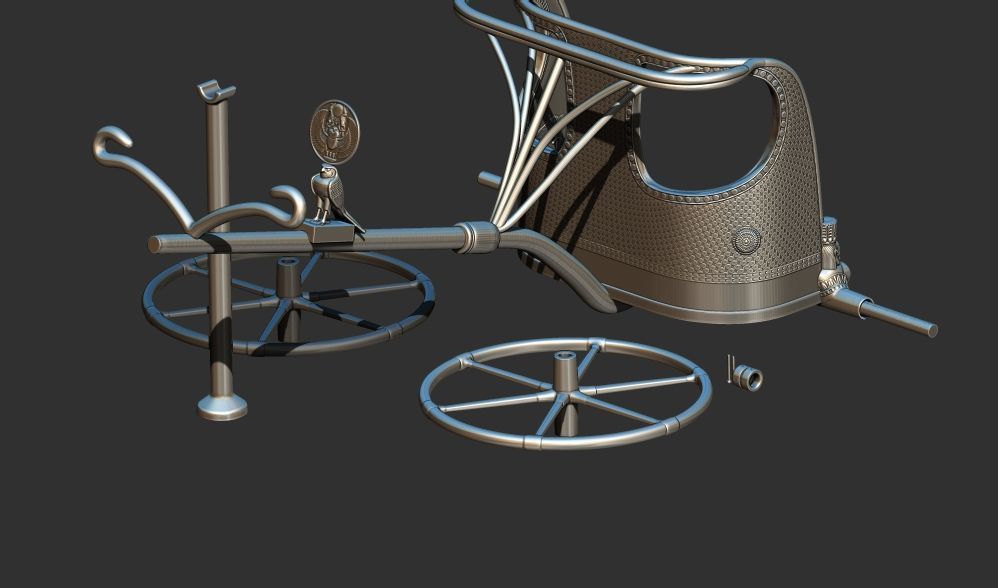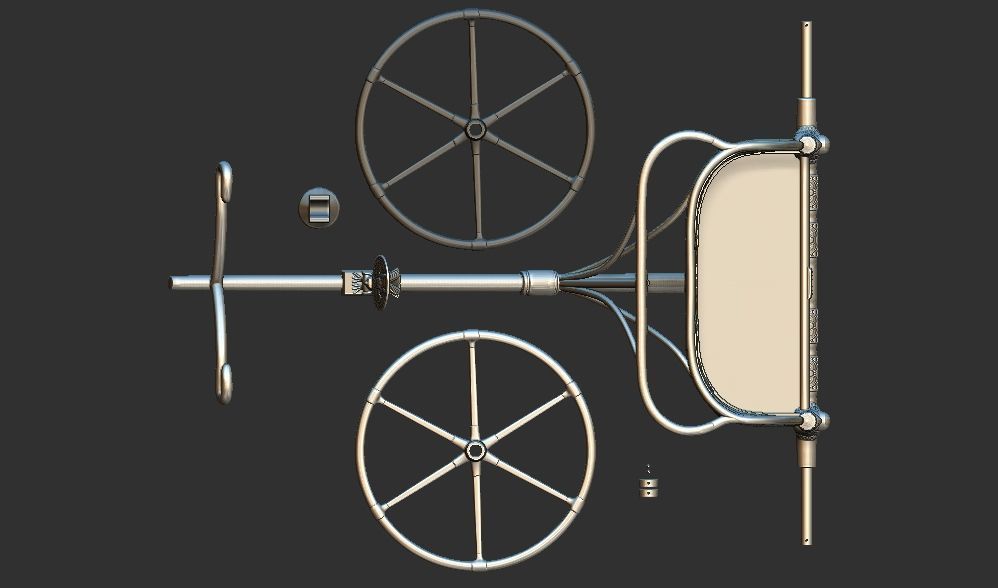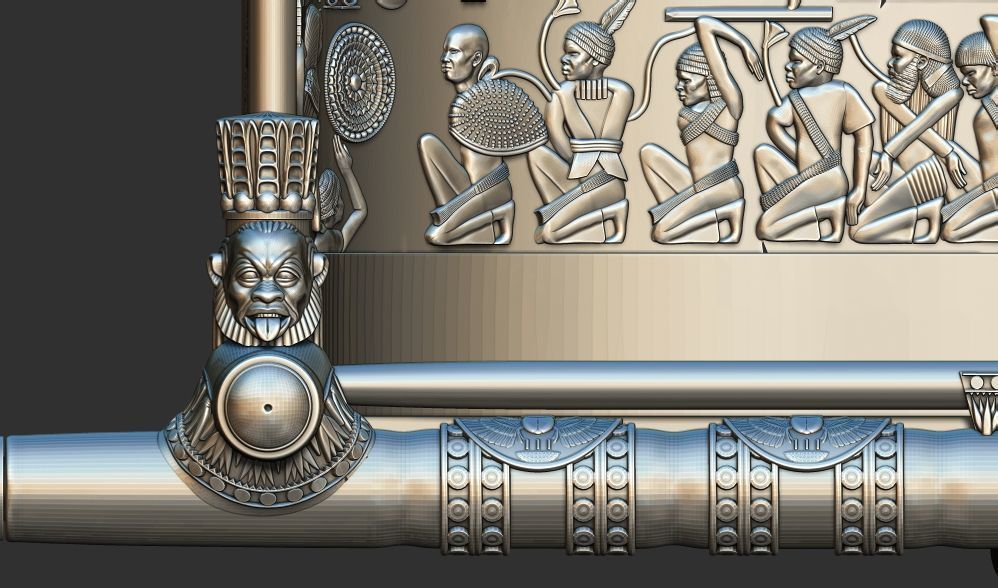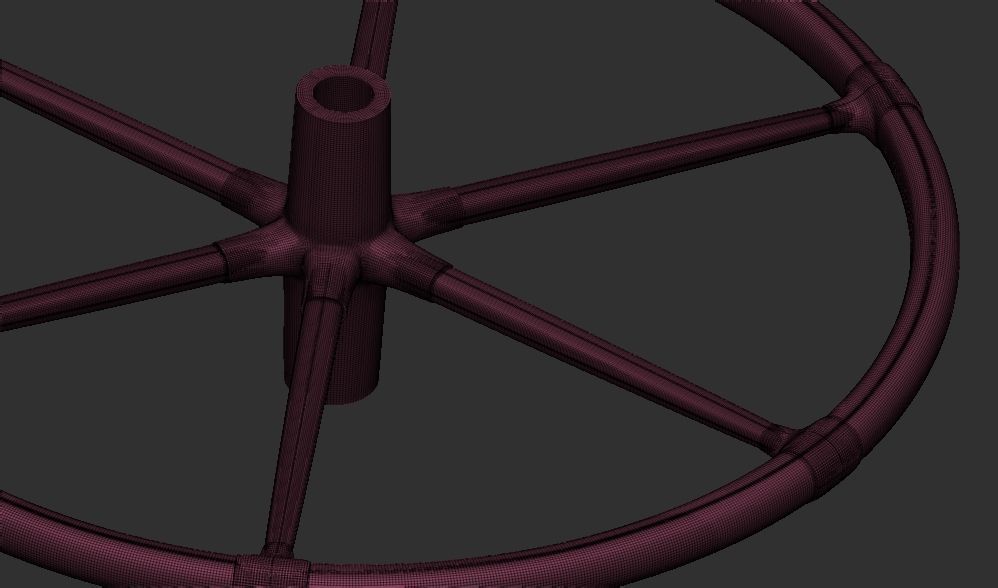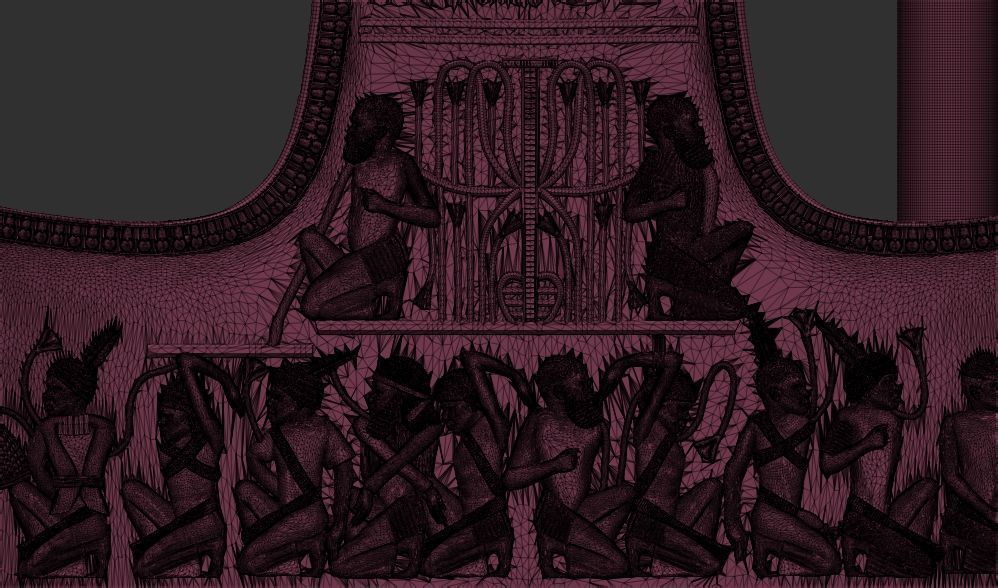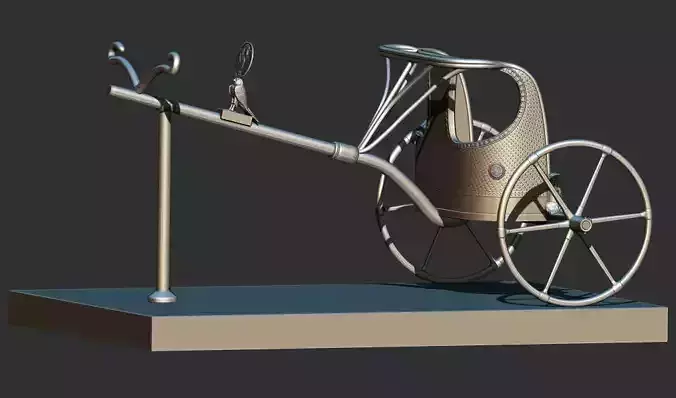
War Chariot of King Tutankhamun 3d printable model 3D print model
War Chariot of King Tutankhamun 3d printable modelFile format Stl ,all parts in one file to keep the scale 100%
The chariots of Tutankhamun consist of a collection of six ancient Egyptian chariots unearthed during the 1922 excavation of Tutankhamun's tomb by British archaeologist Howard Carter, along with numerous other artifacts. This collection includes two large ceremonial chariots, a smaller intricately adorned chariot, and three lighter chariots intended for everyday use by Tutankhamun. These vehicles were crafted for purposes such as hunting, warfare, and ceremonial parades, with some exhibiting innovative designs that allowed for high-speed travel.
Initially displayed in various museums, including the Egyptian Museum in Cairo, the chariots were relocated to the Grand Egyptian Museum in 2018, where they are now showcased alongside other ancient treasures.
Description
A depiction of Tutankhamun's chariot in battle from a contemporary painting, circa 1327 BC.
The chariots discovered in Tutankhamun's tomb in 1922 included four located in the antechamber and two in a storage area. All six chariots were found disassembled. Howard Carter designated two of the most ornately decorated chariots as state chariots.
One of these, cataloged as GEM 4940 (Carter no. 122), was examined and determined to have a bentwood body measuring 1.02 meters in width and 0.44 meters in depth, partially lined with a thin wooden sheet. The front of the frame is reinforced with an additional top rail, and the area between it and the body is adorned with a hieroglyphic union symbol, accompanied by six foreign captives (one of whom is now missing) depicted on the right side. The exterior of the chariot features decorative glass-inlaid bands with feather motifs, alternating with bands that incorporate spirals and rosettes. The central panels, both inner and outer, showcase a raised relief of a solar falcon, identified in the accompanying inscription as Horus of Behedet, from which crowned uraei descend. Below this imagery are Tutankhamun's prenomen and nomen, along with the name of his wife, Queen Ankhesenamun. The lower sections of the panels depict two Rekhyt birds, symbolizing the Egyptian populace, revering a djed pillar flanked by ankh symbols, while foreign captives are illustrated in a state of entanglement below. This design has been interpreted as a representation of royal authority.

